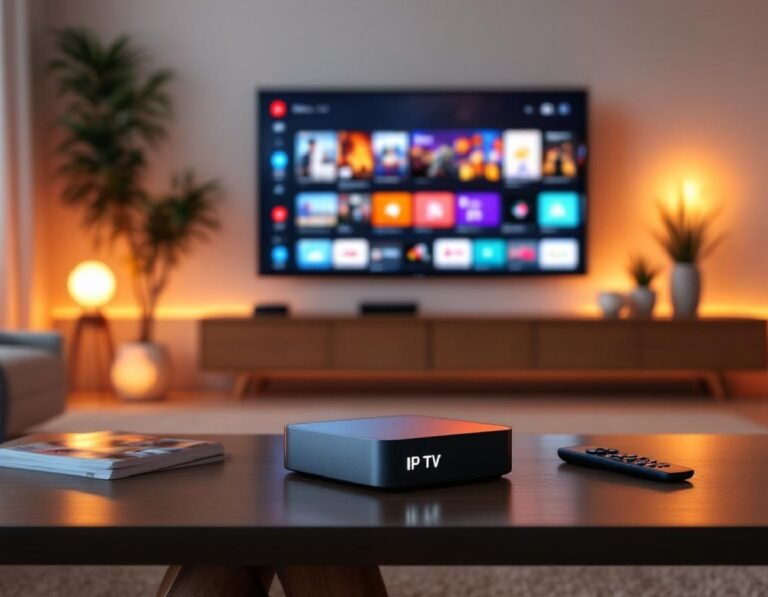Understanding Apple TV’s Release Strategy
Apple TV+ has adopted a weekly release schedule, a distinctive approach that sets it apart from many of its competitors, particularly the binge-release model popularized by streaming giants such as Netflix. This strategy entails releasing a single episode of a series each week rather than making an entire season available at once. The motivation behind this model primarily revolves around fostering sustained audience engagement and encouraging ongoing discussions among viewers. By spacing out episodes, Apple TV+ cultivates an environment where viewers are enticed to return regularly to watch and engage in conversations about the latest developments in their favorite shows.
This weekly cadence creates opportunities for Apple TV+ to develop a dedicated viewer base, as fans are encouraged to engage with the content during its release period. Such a method can stir anticipation and excitement, allowing audiences to digest storylines gradually and generate buzz on social media platforms. The communal aspect of weekly viewership can amplify word-of-mouth promotion, which is especially vital in a crowded streaming marketplace.
Contrastingly, the binge-release model appeals to audiences who prefer to consume several episodes in one sitting, resulting in immediate gratification. However, this often leads to discussions rapidly fading as entire seasons are consumed in a day or two. By maintaining a steady flow of content, Apple TV+ aims to prolong viewer interest and engagement in their programming over an extended period. This strategy poses both risks and rewards, as it may alienate viewers who prefer the immediacy of binge-watching but also solidifies a deeper connection to the content through regular weekly interactions. As Apple TV+ continues to evolve its offerings, the effectiveness of this release strategy will be central to its ability to attract and retain subscribers in a competitive industry.
Viewership Trends: A Comparative Analysis
In recent years, streaming platforms have evolved their release strategies, with some opting for a weekly schedule, while others adopt a binge-release model. Analyzing viewership trends provides valuable insights into audience engagement, particularly for Apple TV, which has implemented a weekly release strategy. A comparison of statistics from Apple TV and its competitors, such as Netflix and Amazon Prime Video, reveals significant differences in viewer behavior influenced by these scheduling formats.
Data shows that Apple TV experiences modest audience retention rates, with average viewership per episode hovering around 75% of total subscribers. In contrast, platforms like Netflix, which release entire seasons at once, often achieve viewership rates in excess of 90% for premiere episodes. This difference suggests that a weekly release schedule may hinder immediate engagement, prompting audiences to either wait for an entire season or lose interest altogether.
Subscriber growth rates further amplify these findings. During 2022, Apple TV reported an increase of approximately 10% in subscribers, while competitors utilizing binge-release strategies, such as Netflix, experienced a more substantial growth rate of around 25%. Viewer surveys indicate a clear preference among audiences for binge-watching, citing the convenience and flexibility it offers over waiting for weekly installments. Feedback from Apple TV subscribers shows a growing dissatisfaction with the pace of content delivery, with many expressing a desire for more content released simultaneously.
This comparative analysis underscores the need for Apple TV to critically assess its release strategy. As viewer preferences increasingly lean towards binge-watching formats, Apple TV risks alienating its audience if it does not adapt its release schedule. Understanding these viewer tendencies is critical for developing content strategies that enhance engagement and foster viewer loyalty.
Audience Reception and Cultural Impact
The introduction of a weekly release schedule by Apple TV has generated varied responses from audiences and critics alike. This strategy diverges from the prevalent trend of binge-watching, which has become increasingly popular across streaming platforms. Critics acknowledge that weekly releases can build anticipation and sustained engagement among viewers, as each episode serves as a topic of conversation until the next installment drops. However, this approach may also create challenges in viewer retention, as some audiences prefer immediate access to entire seasons for sequential viewing.
Social media platforms play a pivotal role in shaping audience perceptions and interactions with shows released weekly. As viewers express their opinions, share reactions, and engage in discussions, shows often gain momentum through these conversations. The concept of ‘FOMO’ (fear of missing out) emerges prominently in this context, where viewers feel an overwhelming urge to stay current with episodes to participate in cultural conversations. While this urgency can enhance engagement and viewership during the episode’s release week, it may lead to fatigue over time as the week-by-week anticipation can wane for some audiences, particularly if storylines become slow-paced or lack the tension necessary to sustain interest.
Additionally, the impact of a weekly release schedule extends to critics and pundits who continue to analyze and dissect episodes in real-time, creating a layered discourse that enriches the cultural fabric surrounding a show. Yet, if a series fails to deliver compelling narratives consistently, viewer enthusiasm can drop sharply, which raises questions about the long-term effectiveness of this release model. Ultimately, while Apple TV’s strategy of weekly releases might initially foster community discussions and engagement, it risks losing momentum if audiences do not remain captivated week after week.
Future of Apple TV’s Release Model: Pros and Cons
As Apple TV navigates the evolving landscape of streaming content, its release model warrants a closer examination, particularly regarding the viability of its weekly release strategy. This approach, characterized by staggered episode availability, has both advantages and disadvantages that could shape the platform’s future. Industry experts have debated whether this model contributes positively or detrimentally to viewer engagement and retention.
One of the primary advantages of a weekly release schedule is that it helps maintain a sustained conversation around individual shows. By providing viewers with new episodes each week, Apple TV can keep audiences engaged over a longer period, fostering a sense of anticipation and community. This strategy also enhances the platform’s ability to capitalize on social media discussions and critical reviews, which can increase overall visibility and attract new subscribers. Furthermore, the weekly rollout allows creators to respond promptly to audience feedback and adapt marketing strategies accordingly.
Conversely, some industry analysts argue that the weekly release model could hinder viewership by creating fragmentation among audiences who prefer binge-watching entire seasons. With numerous streaming platforms providing full season drops, viewers may opt for competitors, thus impacting Apple TV’s subscriber growth. Moreover, the flexibility of on-demand viewing is a significant expectation among today’s consumers, and failing to meet this demand may result in disappointing engagement metrics.
Looking to the future, Apple TV may need to consider a hybrid model that combines both weekly releases and the occasional full season drop. This could cater to diverse viewer preferences and keep the content fresh while still allowing for weekly discussions. As technology advances and viewer habits continue to evolve, Apple TV will need to reassess its release strategies to maintain relevance and enhance user satisfaction in a competitive streaming landscape.


